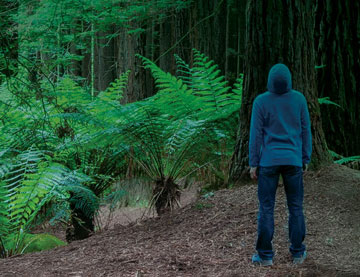Banner Image

School excursions, school activities and school camps can be fertile ground for exploring and developing Science Technology and Math (STEM) skills. We look at some simple and fun activities that you can incorporate into your next school excursion or camp.
Nature provides the perfect ‘outdoor laboratory.’
Look above at night and you might spot the ‘Saucepan’ constellation. Listen closely and you could hear a kookaburra laughing. Crush a handful of pine needles and inhale the fresh scent. Sit around a campfire and watch the crackle of embers.
Time off the beaten track is ideal for exploring STEM projects. All it takes is a bit of forward planning, a handful of ideas, and some young fertile minds to turn your school camp or school excursion into an outdoor ‘laboratory’.
We’ve put together some ideas to get you and your students started on your very own STEM projects.
Slow burn
If you want your campfire to burn long into the evening, what is the best wood to use?
Do research on the necessary conditions/materials to sustain a fire and on the
properties of different types of wood. Which properties do you think will be most important for determining how fast the wood burns?
For example, how do you think density would be
related to burning rate?
Measure the density and burning rate of equal-sized samples of different types of wood. For controlled burning conditions, you can either use a torch (with adult supervision) for a specified amount of time (weigh the samples before and after to determine burn rate), or place the wood samples over an evenly spread bed of white-hot charcoal briquettes (time the samples to determine burn rate).
(Morgan, 2004; Johansen, 2005; Kelly, 2005).
SOURCE ScienceBuddies.org - Which Kind of Wood Burns Slower?
A magnet for fun
Rain, hail or shine, this simple project helps students determine which everyday items are magnetic.
Lay out on the ground a number of different items (a good collection could include a book, nail scissors, paperclip, key, pencil, pen and plastic ruler).
Get your students to test each item’s magnetic quality by holding a large magnet to each object. Collate your data on a sheet of paper.
How high is that tree?
This is a simple and fun exercise you and your students can utilise while out and about exploring on school activities, school excursions and school camps.
If you want to estimate the height of a tree, bend over and look through your legs to see if you can see the top of the tree. If you can’t, move back and try again. Keep doing this until you see the top of the tree.
When you can see the top of the tree, you are as far away from the tree as its height. While this method of measuring the height of a tree is only an estimate, it uses trigonometry. If you look at the top of a tree at a 45 degree angle, then the height of the tree is the same as the distance that you are from the tree.
SOURCE https://www.science-sparks.com/
‘Hot’ ice
What you will need:
• Four cups of white vinegar (acetic acid)
• Four tablespoons of baking soda (sodium bicarbonate)
• A pot, a heat-safe glass measuring cup, a dish and a spoon.
Measure out four cups of vinegar and pour into a medium pot. Slowly add four tablespoons of baking soda, one tablespoon at a time, to the pot. Watch as the sodium bicarbonate and acetic acid begin to fizz. Boil the solution over medium low heat for about an hour, until you reduce the solution by about 75% or until you have about 3/4-1 cup. Pour the concentrated sodium acetate into a glass pyrex measuring cup and place it in the fridge to cool. After about 30-45 minutes, place a small pile of the sodium acetate powder from the pot in the centre of the glass dish. This acts as a seed for the crystals to start
forming on. Now, carefully pour the liquid onto the plate with the sodium acetate powder and watch as crystals instantly begin to form and create an ice ‘tower’. Note: While this form of sodium acetate is non-hazardous, be aware it can irritate skin and eyes - just like vinegar can. So be careful when handling the crystal.
SOURCE www.playdoughtoplato.com AUTHOR Noirin Lynch, December 12, 2017.
